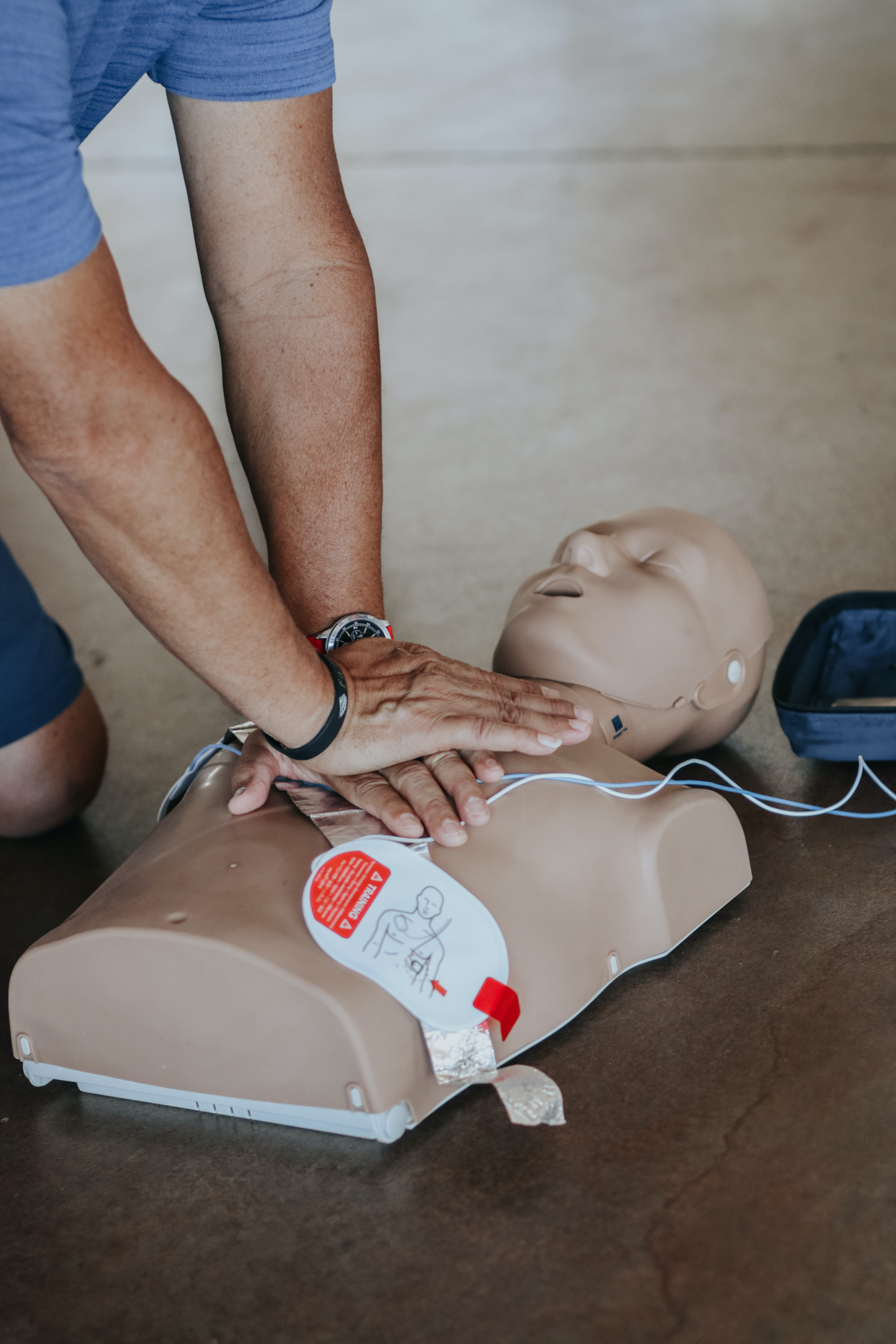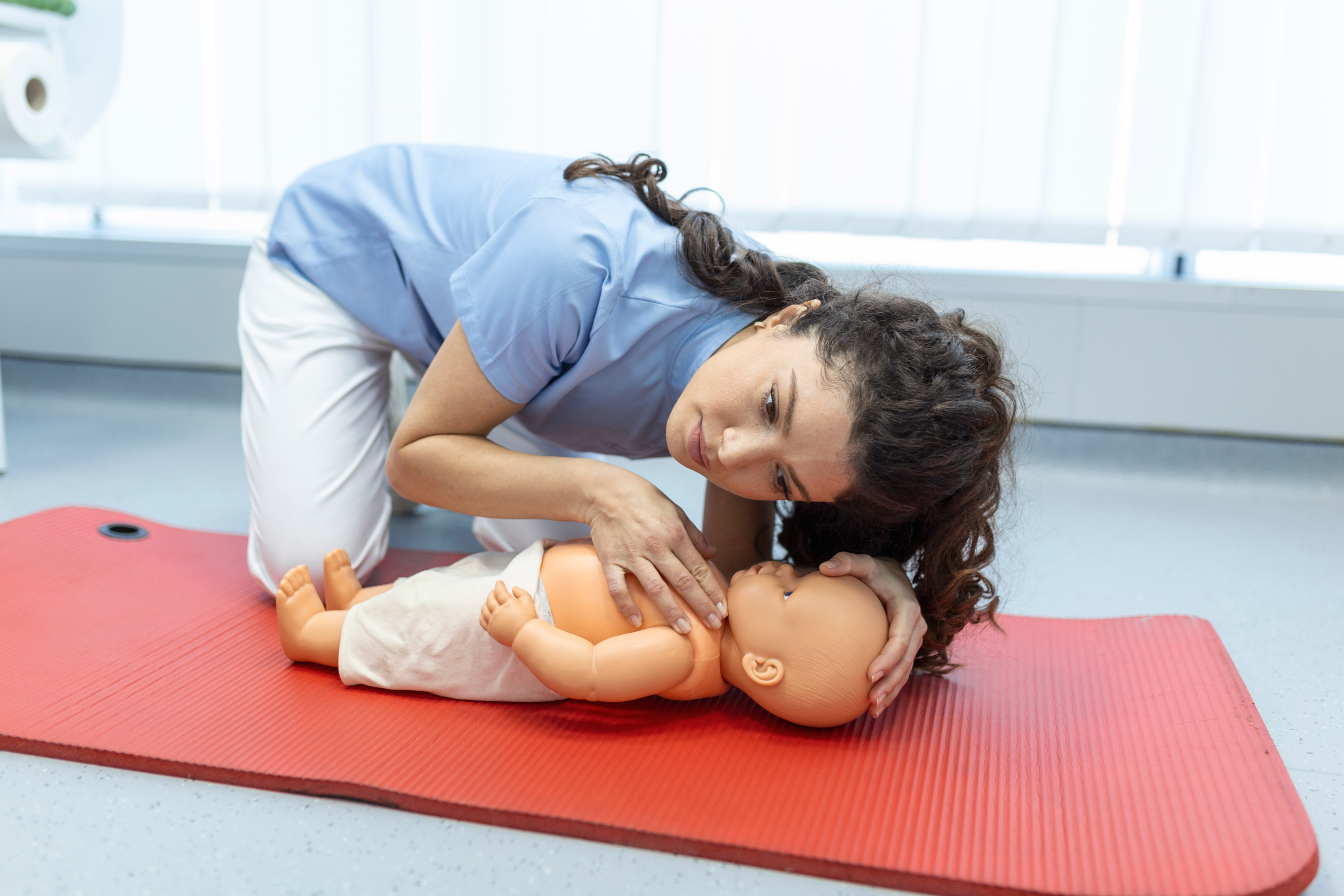What is CPR?


The term CPR stands for cardiopulmonary resuscitation. If someone's not breathing or their heart stops, it is used as a life-saving emergency procedure. When a person's heart stops beating, it is called cardiac arrest. The heart is unable to circulate blood towards the rest of the body during cardiac arrest, as well as the brain and lungs. Without medical care, death can occur within minutes. Therefore, CPR involves chest compressions and then simulates the heart's pumping action with the help of chest compressions. Hence, the process can support the body's natural blood circulation.
Heart attacks and cardiac arrest are not the same things. When the heart's blood supply is interrupted, a heart attack occurs. When experiencing a heart attack, the person can still be able to breathe or even speak. However that person does not require CPR, they need to be sent immediately to a hospital. But having a heart attack makes having cardiac arrest more common.
CPR may be helpful for cardiac arrest victims, although many witnesses of cardiopulmonary arrest do not implement it. Read on to learn some interesting information regarding CPR, cardiac arrest, and how to get ready to save a life.

It is most effective when you perform CPR as soon as possible, but one must first determine whether it is necessary. It should be performed only when someone is not breathing or not having a heartbeat. People may require CPR for a variety of emergencies, such as:
Accidents
Near-drowning
Suffocation
Poisoning
Heart attacks
Drug overdoses
Smoke inhalation
Electrocution injuries
Suspected SIDS is known as sudden infant death syndrome.
It might be challenging to determine whether CPR is necessary during an emergency. This is quite understandable because your judgment is clouded by fear and stress. You can avoid speculation and take immediate action if you learn to recognize the indications that someone needs CPR.
Give CPR if the person isn't breathing to get oxygen-rich blood flowing through the body. The heart stops pumping and the brain begins to deteriorate in the absence of blood flow and oxygen. A person's brain can survive without oxygen for only four to six minutes before serious harm is done. There is a chance that someone will survive cardiac arrest with all the vital organs alive if they receive CPR within that time frame.
A person who experiences cardiac arrest might breathe for a short time. Immediate CPR should be given whenever they infrequently gasp for air.
You should start CPR straight away if you can't feel the pulse. A large portion of the body cannot receive oxygen unless the heart is not pumping. Until emergency officials can take control and try other forms of resuscitation, chest compression can maintain the blood moving to the brain and heart.
4. If the person is unconscious/unresponsive
If the victim is not breathing and is barely conscious or non-responsive, it is advised that you begin CPR. According to studies, CPR performed when it's not necessary is less dangerous than waiting until it's required and can save someone's life.
There are two different kinds of CPR, and each one has the potential to save lives. They are as follows:
It requires to ask help from a reliable source and then quickly pushing on the chest. Chest compressions are what these motions are known as. A pause in establishing the blood flowing through the body can be avoided using hands-only CPR.
This technique, which alternates chest compressions with mouth-to-mouth breathing, is also known as CPR with breaths. In the crucial seconds before help arrives, this kind of CPR might provide the body with extra oxygen.
People who have never received cardiopulmonary resuscitation CPR instruction or who have done it many years ago should perform hands-only CPR. It's also the greatest option for people who have received CPR training but may not feel confident enough to assist someone having a cardiac arrest. This technique can be used by anyone who has received training in traditional CPR and is familiar with the procedure.
Compression-only CPR is recommended only if an adult or teen is experiencing cardiac arrest. If the distressed individual is a child or a baby, it is usually not advised. People who have never received CPR training can perform hands-on CPR by relating to the given instructions.
Verify whether it is secure for you to approach the person in need of your help.
Say to them, "Are you all right?" and tap their shoulders directly for a response.
If the person is not responding, contact your local emergency services. If you are alone and suspect the person has drowned, start CPR for 2 minutes before alerting emergency assistance.
Put the person carefully on a flat area, with their arms straight, and get down on one knee next to them to start performing chest compressions.
Use an automatic defibrillator to assess the patient's heart rhythm if one is around. The device can also tell you to shock the heart once with electricity before starting CPR. Chest compressions should be started immediately if an AED is not immediately accessible.
The heel of one of your hands should be positioned in the middle of the adult's chest, between the nipples. Place a second hand on top of the first one. Only the heel of your hand should be on their chest as you interlace your fingers and gently lift them.
Put the heel of one of your hands between the nipples in the centre of the chest of a child.
Only two fingers should be positioned in the centre of the infant's chest, right below the nipple line.
Use your upper body weight to push hard down on the person's chest for at least 2 inches to start chest compressions. At a pace of 100 to 120 compressions per minute, carry out these exercises. Allow their chest to expand and contract as needed.
Use one hand to push down firmly and directly on the child's chest for at least two inches to begin compressions. At a pace of 100 to 120 compressions per minute, carry out these exercises. Allow their chest to expand and contract as needed.
Use two fingers to press straight down on the infant's chest for at least 1.5 inches to begin compressions. At a pace of 100 to 120 compressions per minute, carry out these exercises. Allow their chest to expand and contract as needed.
You should continue chest compressions until the victim begins breathing normally or emergency medical services arrive and continue the CPR cycle. Allow the victim to lie in the recovery position silently until help arrives if they start to breathe.
It is beneficial to perform mouth-to-mouth resuscitation, or conventional CPR with breaths, on an adult, teen, child, or newborn. It combines chest compressions as well as mouth-to-mouth breathing. However, each age group requires a distinct type of chest compression.
According to the American Heart Association's new CPR recommendations, chest compressions should be carried out before opening the person's airway. The prior design was 'ABC', which had the Airways checked first, followed by Breathing and then Compressions. However, now CAB is used, which firstly resembles Compressions followed by Airway and then Breathing.
According to the new CAB method, everyone in direct range of someone who might be having a cardiac attack should start CPR immediately. This is because the person's blood and lungs still contain oxygen during the initial minutes after cardiac arrest. On a person who is unresponsive or not breathing regularly, starting chest compressions first can help ensure that this vital oxygen reaches the brain and heart as soon as possible.
The processes of mouth-to-mouth resuscitation and compression are both crucial for children and infants under the age of one. If you have received CPR training and come across a person who is not breathing or is unresponsive. Perform 30 chest compressions using only your hands and then breathe in while performing CPR.
The following are the steps for successful resuscitation for adults, children, and newborns.
Place the person on a solid, level surface. After ensuring the area is secure, quickly start doing 30 chest compressions.
With a backward head tilt, place the palm of your first hand on the person's forehead, and then lift their chin upwards gently with your second hand.
Pinch the nostrils closed while keeping the airway open, then place a CPR face mask over the person's mouth to create a seal. Put your mouth over the person's if a mask isn't available.
Give two rescue breaths, with a one-second gap between each. Keep an eye out for their chest rising with each breath. If it doesn't, try again after moving the face mask.
30 compressions and two rescue breaths should be alternated until the victim starts to breathe on their own or until help comes. If the victim starts to breathe, have them lie on their side and remain still until the ambulance arrives.
Use a two-handed, one-handed, or two-finger compression technique, depending on the child's age. Take these actions:
If the situation is secure, ask for the parent or guardian's permission before beginning CPR.
i. Children
If you know the child's name, shout it out and tap them on the shoulder. Check for breathing, bleeding, and injuries all at once. Verify for no more than ten seconds.
ii. Infants or babies
Do voice prompts of the baby's name to gain their attention or give a foot tap to ensure they are breathing properly. Search for any evidence of bleeding or injuries. Verify for no more than ten seconds. If the baby is not responding, ask someone to call the emergency help service.
Once they are securely on a flat surface, kneel next to them.
i. Children
Using the one-handed technique on a little child, place the heel of the hand in the centre of the child's chest. Use compressions at a pace of 100 to 120 per minute at a depth of around 2 inches.
ii. Infants and babies
Put both thumbs in the middle of the chest, adjacent to one another. The remaining fingers should be wrapped around the infant to stabilize it. Thumbs should be quickly and forcefully pressed down. Use compressions at a pace of 100 to 120 per minute at a depth of approximately 1.5 inches. Approximately 30 compressions must be made.

By tilting the head or doing a chin lift, the child's airway can be made slightly wider than in a neutral position.
Start to blow steadily for one second into the baby's or child's mouth. Observe to make sure the chest rises. Before taking a breath, let the previous one out of their mouth. Try using a gently tilt technique for the head to see if that causes the chest to lift. When delivering the subsequent breath, ensure a good seal over the mouth and nose.
Continue until you spot signs of life or there is access to emergency care. Stop after 2 minutes which is about 5 rounds of 30 compressions and 2 breaths, and call for healthcare providers if you are by yourself.
It's important to practice bystander CPR, which can be practised by the general public. Unfortunately, around 70% of cardiac arrest cases are reported outside of hospitals. Therefore it is our duty to spread awareness to others. This way, a person's life can be saved as they are more likely to receive bystander CPR. To retain your abilities, taking the course again at least every two years is advisable. This enables you to gain knowledge of any new developments or discoveries in emergency cardiovascular care procedures and help your loved ones stay alive.
Plus get the inside scoop on our latest content and updates in our monthly newsletter.